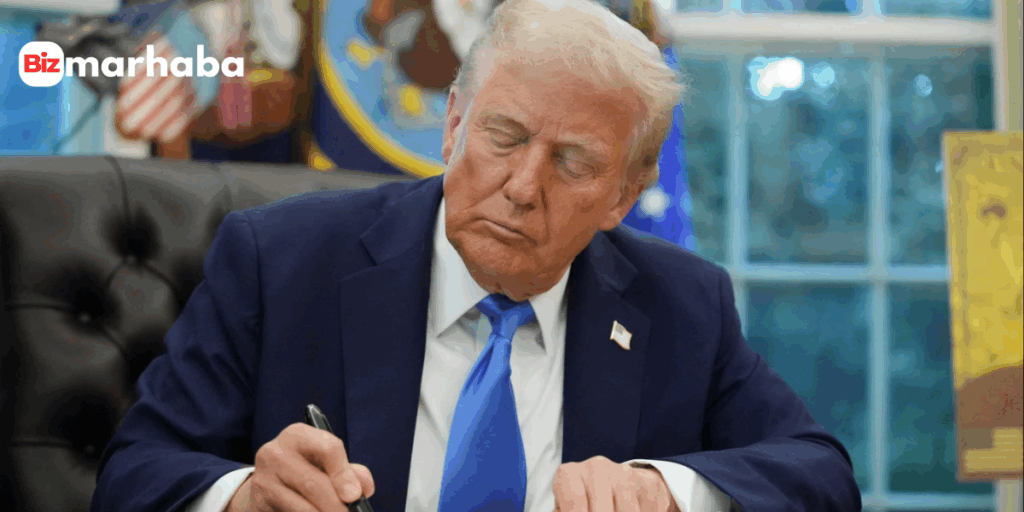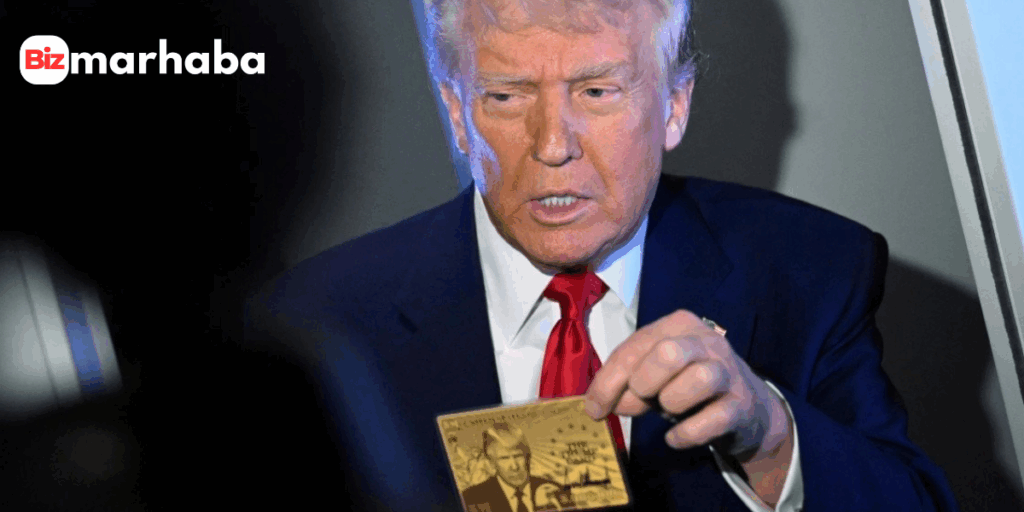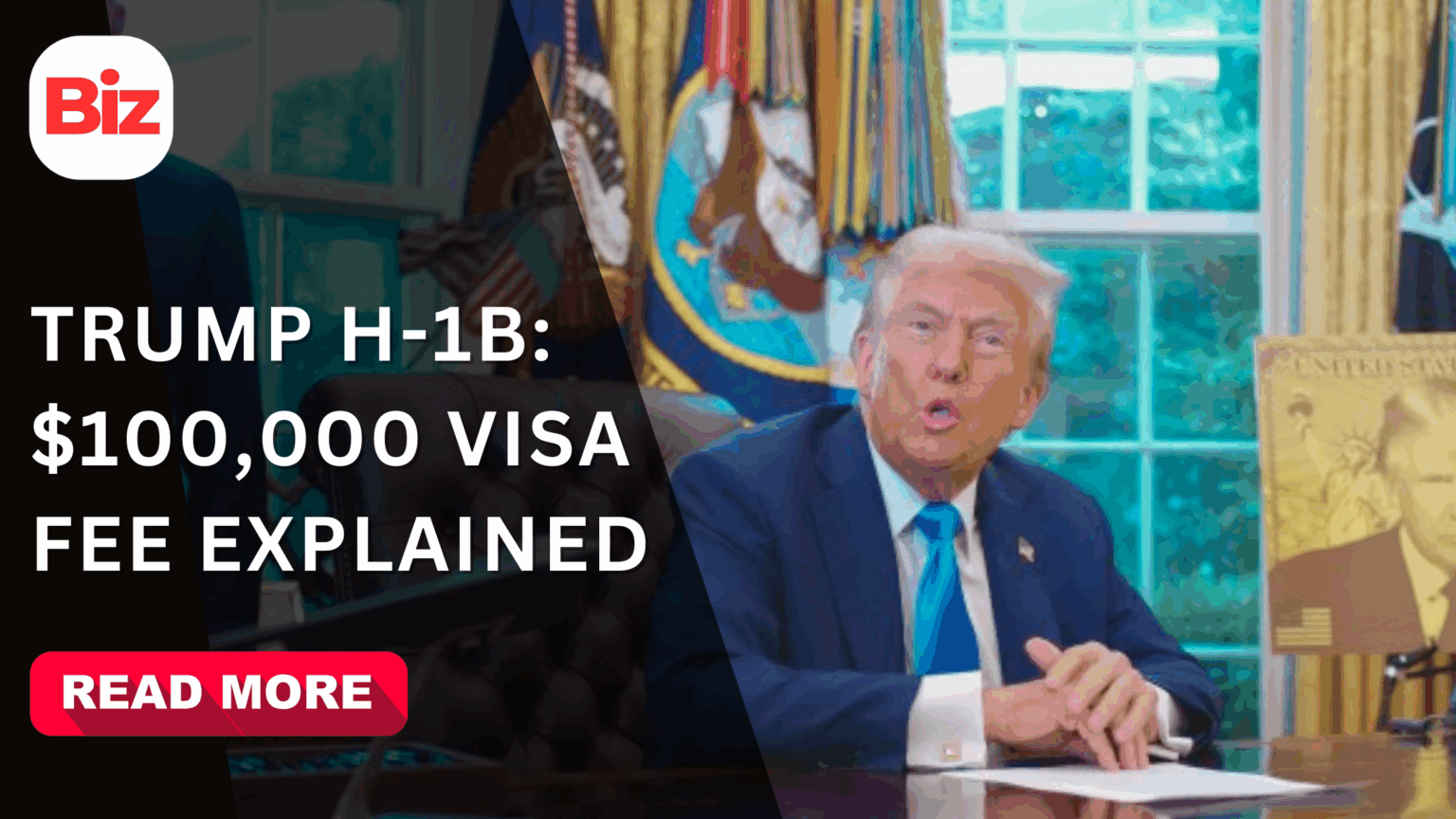The shock came fast. On September 21, 2025, U.S. President Donald Trump signed an executive order that turned redefined the Trump H-1B visa system overnight. The cost of applying for an H-1B visa jumped from $215 to $100,000.

The White House called it a reform to curb abuse. But for tech companies and foreign workers, it felt more like a wall — one built from dollars rather than bricks, significantly impacting the Trump H-1B landscape.
Trump H-1B Fee Unlike Any Other
The H-1B program, long the backbone of America’s tech labor force, suddenly became one of the most expensive immigration pathways in the world. Companies are now required to pay a six-figure fee just to secure one foreign worker under the Trump H-1B rules.
To put that in context, the H-1B registration fee currently stands at $10. Employers were already covering thousands in legal and processing costs. Now, they face a number so steep it could deter even Silicon Valley’s deepest pockets.
The administration defends the move as a way to ensure only “truly highly skilled” workers come in. But critics argue the Trump H-1B policy punishes innovation.
Why the Trump H-1B Fee Matters for Tech Giants
Amazon, Microsoft, Meta, and Google, the top H-1B employers are scrambling. Together, they sponsor tens of thousands of foreign engineers, analysts, and developers. With a $100,000 fee attached, each new hire becomes a major financial gamble under the Trump H-1B framework.
And the hardest hit? Indian IT workers who account for nearly three-quarters of all H-1B approvals. Their careers, once anchored in the promise of a U.S. job, now face uncertainty.
Companies are already adjusting. Offshore hiring is back on the table. Some may shift projects to India or Eastern Europe, where skilled labor is abundant and far cheaper.
What Experts Are Saying
Not everyone believes the fee will achieve its intended goal. An expert says Trump should reform H-1B visa program rather than price it out of reach. The critique is simple: reform is different from exclusion. Raising costs doesn’t guarantee better talent, it just narrows access.
Labor economists warn that the move could backfire. Instead of protecting U.S. jobs, it might push global firms to expand abroad, taking projects and investment with them.
The Fine Print Nobody Saw Coming
Buried in the executive order is another twist: changes to fee exemptions. Previously, some employers benefited from waivers under what’s called the H-1B and H-1B1 data collection and filing fee exemption supplement. That loophole is gone. Every company, regardless of size, will pay the full $100,000.
Small startups, already struggling to compete with tech giants, may find themselves priced out of the U.S. market entirely.
Foreign Workers Struggle Under Trump H-1B Policy
For foreign professionals, the message is chilling. While current H-1B holders aren’t directly hit until renewal, the looming costs create a shadow over career mobility. Workers fear they’ll be locked into jobs, with fewer chances to move or negotiate better roles.
And there’s a bigger question: will the U.S. remain attractive at all? Countries like Canada and the UK are already marketing themselves as friendlier alternatives. With Trump’s order, the U.S. risks losing the very talent it has long depended on.
Some immigration advocates warn that the Trump H-1B policy could accelerate a “talent exodus” — pushing engineers and developers to countries offering smoother, cheaper visa systems.
A Two-Tier System?
Critics also point to the irony of Trump’s “Gold Card” visas. While skilled workers face a $100,000 barrier, the wealthy can buy their way in. A $1 million Gold Card offers residency and work rights. A $5 million Platinum Card brings tax benefits.

It feels less like reform, and more like a two-tier immigration system: one for billionaires, another for everyone else.
The Road Ahead
The fight isn’t over. Lawsuits are expected. Business groups are already lobbying against the order. Tech leaders warn of project delays, brain drain, and higher costs that will ripple through the economy.
Still, the White House insists the crackdown is necessary. Officials cite cases of visa abuse, wage undercutting, and even fraud. They argue that after decades of misuse, the H-1B needed a reset.
For now, one thing is clear: this is the most dramatic shift in U.S. skilled immigration policy in decades. Whether it protects American jobs or simply pushes talent away remains to be seen.
For official details on the visa program, the U.S. Citizenship and Immigration Services (USCIS) maintains updated guidelines on H-1B eligibility and fees.
Conclusion
The Trump H-1B executive order isn’t just about money. It’s about control, power, and the future of America’s role in the global tech economy. With a $100,000 price tag, the U.S. has sent a clear message: talent is welcome, but only at a cost few can pay.
And that cost could reshape the industry for years to come.
YOU MAY ALSO READ: US VISA FEE INCREMENT








